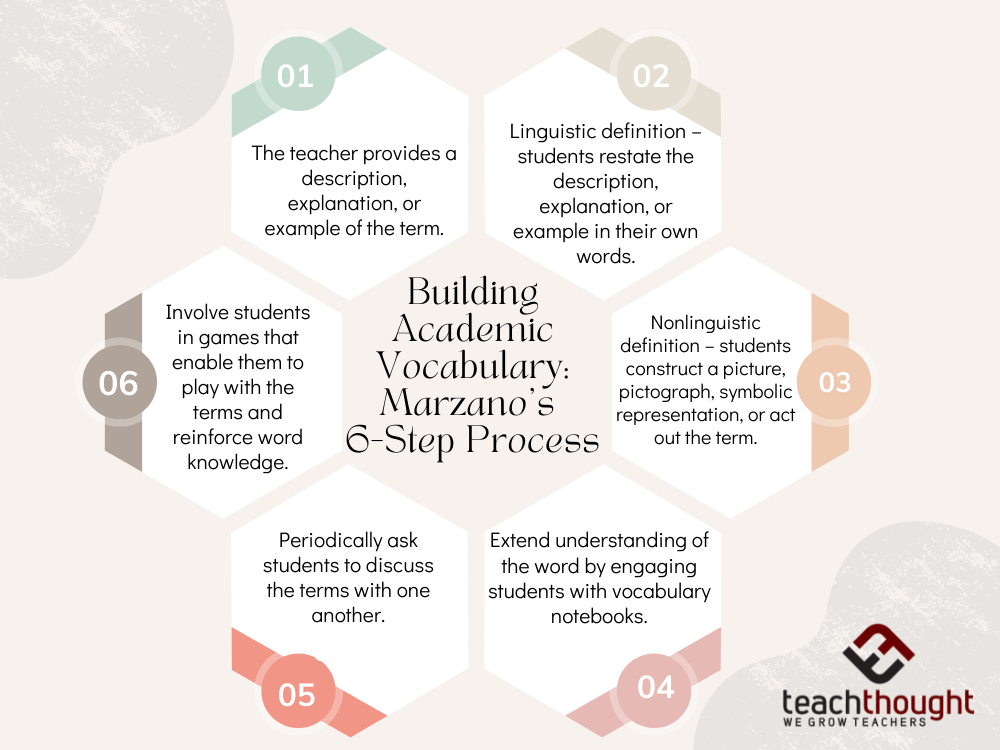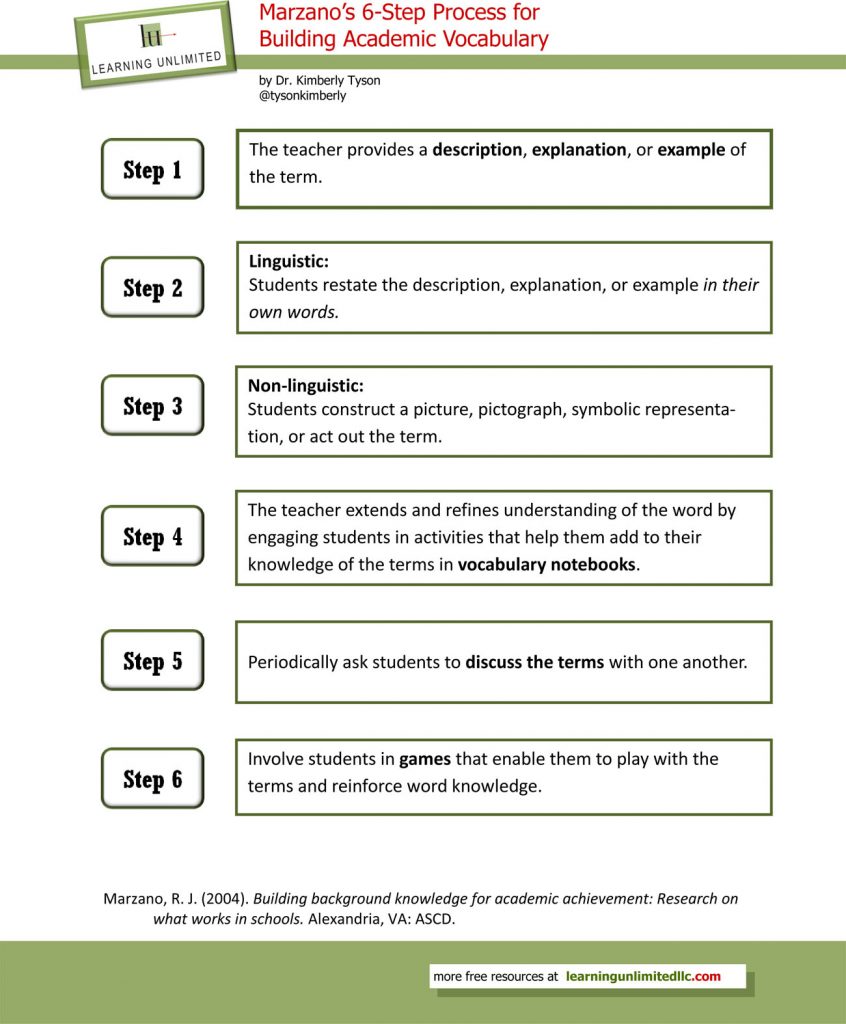Building Academic Vocabulary: Marzano’s 6-Step Process
In this post, Marzano laid out a 6-step process for building academic vocabulary, including direct instruction and playing with words.

How To Build Academic Vocabulary Using Marzano’s 6-Step Process
contributed by Kimberly Tyson, Ph. D.
Vocabulary and its strong relationship to comprehension has been verified over and over again. Vocabulary plays an important part in learning to read as well as reading to learn. We also know that increasing vocabulary knowledge plays a large part in overall school success and has a direct impact on comprehension.
Effective vocabulary instruction is a key foundation to helping students acquire a wide and diverse vocabulary. Students need both direct and indirect instruction in vocabulary and word meanings as well as multiple exposures to words. It is through multiple exposures and repetition that students begin to understand the nuances of words and how to use them when speaking and writing.
Additionally, active engagement helps students take part in the learning process and begin to “own” the words and understand word meaning in multiple contexts. Independent reading, intentional read alouds, and wide reading all encourage students long-term vocabulary development and growth.
Teachers need a variety of instructional strategies for teaching vocabulary. Unfortunately, there remains a gap between what we know are effective strategies and what often takes place in the classroom. In Building Background Knowledge, Bob Marzano laid out a six-step process for building academic vocabulary. It includes direct instruction, linguistic and nonlinguistic definitions, recording word learning in a notebook or journal, talking about words, and playing with words. Multiple exposures are at the heart of the process.
Vocabulary Instructional Strategies: Marzano’s 6-Step Process
The six-step process includes the following steps:
- The teacher provides a description, explanation, or example of the term.
- Linguistic definition – students restate the description, explanation, or example in their own words.
- Nonlinguistic definition – students construct a picture, pictograph, symbolic representation, or act out the term.
- The teacher extends and refines understanding of the word by engaging students in activities that help them add to their knowledge of the terms in vocabulary notebooks.
- Periodically ask students to discuss the terms with one another.
- Involve students in games that enable them to play with the terms and reinforce word knowledge.

For several years, I’ve been teaching this process to teachers and helping them implement it in their classrooms. I’ve found that when teachers become intentional about vocabulary instruction, they become more excited about word learning and observing growth in their students. Soon, teachers get on board with a schoolwide vocabulary improvement effort, and they begin selecting words with more intention, developing a toolbox of vocabulary strategies, creating word walls to support learning, and observing growth in learning and achievement.
Lessons Learned
As a teacher, you can’t teach every word, so students also need to be engaged in independent reading to build their vocabulary. However, you should try implementing the six-step process for targeted words that are key to mastering content or comprehending text. Since Marzano’s six-step process has been around several years, he reports several ‘lessons learned.’ Keep these in mind as you implement the six-step process for building academic vocabulary:
- The process works best when you don’t skip any steps. Don’t pick and choose which step you ‘like’ best – do all 6 steps.
- Students need to generate their own definitions of terms—sometimes, I call this a ‘kid-friendly’ definition.
- Step 3 – the nonlinguistic definition – is a powerful and important step. When students visualize, create a pictogram, or act out a word, they learn it well and achievement soars.
- Games – Step 6 – help students play with words and internalize word meanings in a non-threatening atmosphere.
Teachers like to use this summary as they’re learning the six-step process. They can use the six-step process as a grade-level or content-area team and report to each other.
Which step did you find easiest?
Are there any that you’re having difficulty with implementing?
Discuss with your teaching partners and work to refine implementation. Check for student learning in both informal and formal ways.
